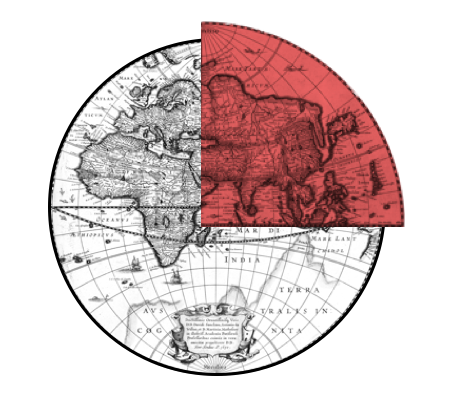15past15 is a podcast which discusses how the past is made, and by whom.
Its second season examines changing understandings of Wealth / Reichtum / Richesse, from the medieval to the modern, and from Europe to Asia, the Americas, and beyond. What was the relationship between wealth and natural resources? How has wealth been expressed, both intellectually and in terms of material culture? How have wealth inequalities affected power, health, and global development? And why should historians care?
15past15’s first season focused on history and history-writing in East Asia, from the sixteenth century to today. Interviewees debated the indigenous historical traditions of China and Japan in particular, and the ways that understandings of the past evolved at times of acute political and societal change.
Die 15 Folgen der ersten Staffel des Podcasts aus dem Historischen Seminar der Uni Zürich:
- Introducing 15past15
Martin Dusinberre and Birgit Tremml Werner introduce 15past15 - Confucius’s Comeback
Joachim Kurtz discusses the changing ways in which Confucius has been understood in the last five hundred years—from “philosopher” to “Chinese” sage whose teachings are incompatible with Western modernity. Interviewed by Martin Dusinberre. - When did Taiwan Begin?
Leigh Jenco considers what debates about the history of Taiwan in seventeenth-century China bring to our theoretical understanding of imperialism. Interviewed by Martin Dusinberre and Birgit Tremml Werner. - Translating the Republic of Letters
David Mervart traces the entanglements of foreign trade and book collecting in so-called “closed Japan”, and the ways that Japanese translators came to conceive of—and embody—the republic of letters. Interviewed by Martin Dusinberre and Birgit Tremml Werner. - China in Japan’s Modern Time
Stefan Tanaka suggests that Japanese intellectuals “discovered” Japan’s past in the mid-nineteenth century, both by reconsidering China’s place in the world and by thinking about time in new ways. - Professionalising Japan’s Past
Lisa Yoshikawa illustrates how academic historians in modern Japan used the professionalisation of studying and writing about the past to establish politically opportune narratives for a modern imperial state. - The Columbus of Japan
Birgit Tremml-Werner introduces Yamada Nagamasa (1590–1630), whom some scholars called the “Columbus of Japan” in the 1940s—a label, she argues, which tells us as much about twentieth-century as seventeenth-century history. Interviewed by Joachim Kurtz and Martin Dusinberre. - Misreading the Macartney Mission
Henrietta Harrison examines how Lord Macartney’s mission to Qing China in 1793 has been archivally framed in the West and in China, leading to the idea that Chinese international relations particularly prioritised ritual and tribute. Interviewed by Martin Dusinberre and Birgit Tremml Werner. - Persuasion with China’s Past
Jonathan Chappell explains how the historical reference points for Qing empire officials changed across the nineteenth century, especially with regard to the management of China’s borderlands. Interviewed by Martin Dusinberre. - Writing Women in late-Qing China
Joan Judge traces the shifting repertoire of exemplary models for women as Qing China struggled with national reform and historical time on the eve of the 1911 Revolution. Interviewed by Martin Dusinberre - Chinese Utopias
Lorenzo Andolfatto shows how societal transformations in late-nineteenth century China were reflected in the utopian popular literature. Interviewed by Martin Dusinberre and Birgit Tremml Werner. - Whose Renaissance?
Pablo Blitstein discusses the methodological challenges that arise from studying “the Renaissance” in world history. Interviewed by Birgit Tremml Werner and Martin Dusinberre. - China’s Renaissance
Barbara Mittler introduces the Chinese scholar Hu Shi’s conception of a Chinese renaissance in the early twentieth century and its implications for the writing of global history. Interviewed by Joachim Kurtz and Birgit Tremml Werner. - Japan and the Pacific Age
Martin Dusinberre examines both the importance of the Pacific Ocean in modern Japanese history and the challenges that come from trying to write the „Pacific Age“. Interviewed by Joachim Kurtz and Birgit Tremml Werner. - Exhibiting China and Japan
Bettina Zorn explains how objects of entangled histories illustrate Chinese and Japanese pasts in the East Asia collection of the Weltmuseum Wien. Interviewed by Birgit Tremml-Werner.

